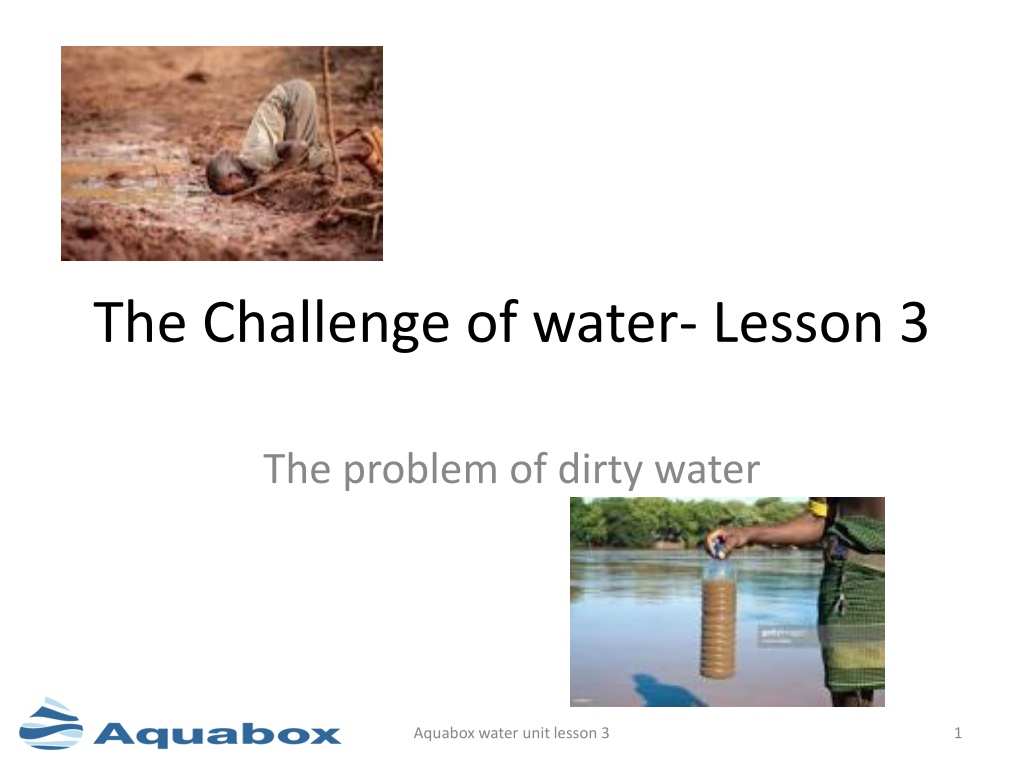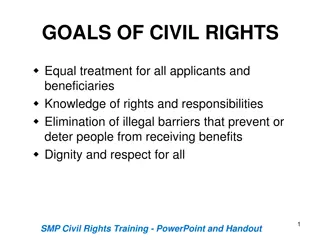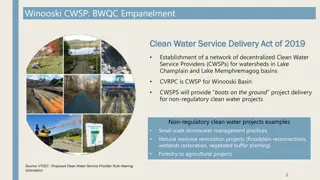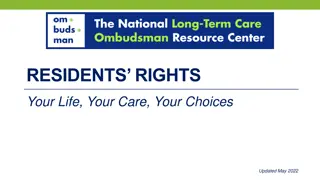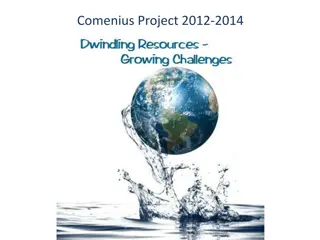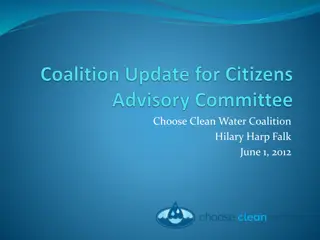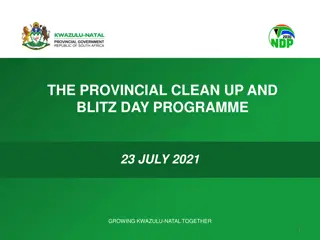The Challenge of Water: Lessons on Clean Water Access and Rights
Learn about the importance of clean water access, the problem of dirty water in developing regions, natural water sources, the human right to water, and the global impact of water insecurity.
Download Presentation

Please find below an Image/Link to download the presentation.
The content on the website is provided AS IS for your information and personal use only. It may not be sold, licensed, or shared on other websites without obtaining consent from the author. Download presentation by click this link. If you encounter any issues during the download, it is possible that the publisher has removed the file from their server.
E N D
Presentation Transcript
The Challenge of water- Lesson 3 The problem of dirty water Aquabox water unit lesson 3 1
Starter With your partner 1. Come up with 5 reasons why the water in our UK taps is so clean ( write them down) THEN 2. Suggest 5 reasons why some parts of the developing world has only dirty water for human use ( write them down) Aquabox water unit lesson 3 2
Sources of water in the developing world In the last lesson, we found that a lot of people in the developing world did not have access to safe clean water. However we must not be stereotypical and must remember there are many people that do have standards similar to ours. Let`s focus on those who are less fortunate Where do they get there water from? Jot down at least 5 possible places that people might get their water from in a water challenged area Aquabox water unit lesson 3 3
Possible natural sources of water Surface sources e.g. Rivers, lakes, ponds, springs Underground sources e.g. aquifers( water layers underground) via boreholes and well Aquabox water unit lesson 3 4
THE RIGHT TO WATER One of the most important recent milestones has been the recognition in July 2010 by the United Nations General Assembly of the human right to water and sanitation. The Assembly recognized the right of every human being to have access to enough water for personal and domestic uses, meaning between 50 and 100 litres of water per person per day. The water must be safe, acceptable and affordable. The water costs should not exceed 3 per cent of household income. Moreover, the water source has to be within 1,000 metres of the home and collection time should not exceed 30 minutes But it is not happening for many Aquabox water unit lesson 3 5
Remember from last lesson 2.2 billion people lack access to safely managed drinking water services. (WHO/UNICEF 2019) Almost 2 billion people depend on health care facilities without basic water services (WHO/UNICEF 2020) Over half of the global population or 4.2 billion people lack safely managed sanitation services. (WHO/UNICEF 2019) 297,000 children under five die every year from diarrhoeal diseases due to poor sanitation, poor hygiene, or unsafe drinking water. (WHO/UNICEF 2019) 2 billion people live in countries experiencing high water stress. (UN 2019) Aquabox water unit lesson 3 6
What happens if we use dirty water dirty water https://www.youtube.com/watch?v=K8Q_5QcO TGk a daily chore https://www.youtube.com/watch?v=teX2l_E40 mw Write down your reactions to watching these video clips Aquabox water unit lesson 3 7
Why does the water get polluted and then dangerous for human use? Human and animal waste Untreated waste water Naturally occurring acids and metals Industrial pollution Agricultural pollution fertilizers, pesticides Naturally occurring parasites, bacteria, viruses Insects and animals that live in waterAquabox water unit lesson 3 8
What can happen if you use dirty water? Complete the picture below to give some of the problems that might occur if we use dirty water for washing, cleaning, drinking and cooking What problems ? Aquabox water unit lesson 3 9
What problems can occur if we use dirty water ? Quote (WHO) Contaminated water and poor sanitation are linked to transmission of diseases such as cholera, diarrhoea, dysentery, hepatitis A, typhoid, and polio. Absent, inadequate, or inappropriately managed water and sanitation services expose individuals to preventable health risks. Aquabox water unit lesson 3 10
Your research task - Homework You will be given ONE disease that occurs because people use dirty water in their daily lives Your task is to produce a written piece of written work (including facts/figures/maps and pictures) that includes 1. What the disease is 2. Why it is caught by people 3. What problems it causes for humans 4. How it treated o prevented 5. Case studies from the developing world MAKE IT INTERESTING TO THE GENERAL READER! Aquabox water unit lesson 3 11
Diseases some of the most common Pathogens Amoebiasis, Cryptospondiosis, Giardiasis Bacteria- Botulism, Campylobacteriosis, Cholera, E coli, Leptospirosis, Typhoid Viruses- Hepatitis, Polio, Parasitic Worms- Dracunculiasis (Guinea Worm) Aquabox water unit lesson 3 12
How one charity is helping Let`s look at Aquabox how Aquabox is helping with clean water Whenever a disaster strikes, whether it is natural or man-made, there is always an urgent need to provide safe drinking water to those affected. Water supplies are often severely affected in the aftermath of a disaster. Water pipes may be destroyed or the water supply will be contaminated with water from sewage and drains. In these circumstances people have no choice but to collect water from available local sources, such as streams, rivers and wells. Such water is often contaminated and unsafe to drink. Water-borne diseases such as diarrhoea, cholera, dysentery, typhoid and polio will spread rapidly and will affect particularly the more vulnerable young and older members of a community. Aquabox meets the challenge of providing clean safe drinking water in times of crisis by sending our AquaFilter Family and AquaFilter Community Units to those most affected. An AquaFilter Family Unit can deliver up to half a million litres of clean drinking water and a Community Unit over 1 million litres of clean drinking water over its working life. Find out more about Aquabox Aquabox water unit lesson 3 13
